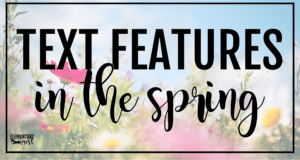
In my opinion, asking questions has always been one of the harder things that we have to teach in primary grades. Kids ask questions ALL the time, but when it comes to asking relevant questions about what they just read, it becomes difficult. I have always struggled with this standard, which is why I’m writing this blog post today. I’m hoping to give you some ideas if you, like me, struggle with teaching kids to ask questions before and after reading.
While it seems silly to teach a first or second grader the difference between a sentence and a question, it is quite necessary. The students likely know exactly how to ask their mom to buy them a piece of candy at the store. And they certainly know how to state that they are bored and want something else to play with. But when it comes to information and fictional text, it doesn’t come as easily. The questions they want to form are typically lacking text evidence.
Have them work on reading sentences and questions and sorting them.
Once the students have mastered the ability to differentiate between sentences and questions, it is very important for students to acknowledge that some questions are WEAK, and some questions are STRONG.
In my classroom, we would always ask questions, then determine if they were ‘easy-peasy’ questions or strong questions. Kids loved this because it made it more enjoyable for them to determine strong and weak questions.

Click the image above to find a cute article with four games to teach kiddos to ask and answer questions from Sandbox Learning.
Anchor charts are important to create WITH your students. As you create anchor charts on this topic, stop and have students discuss what you’ve written and introduced. This will make the anchor chart more accountable for them.
Teaching Kids to Ask Questions with Anchor Charts
Ask THEM to come up with question words for your anchor chart.
Lesson time. Start with a picture!
Show an image on the board. Have the students turn and ask a partner one
question about the picture and tell one sentence about the picture. Remind their partners to keep them responsible and accountable for using STRONG questions and not easy-peasy questions.
Modeling and Teaching Kids to Ask Questions
Modeling in the classroom is a necessary strategy. Many teachers give instructions and let students try it out on their own. While that may work for a large number of your students, kids also need to SEE their expectations, especially in primary school.
When teaching asking and answering questions, modeling is very critical so that students can see how to read their text, and stop throughout, asking meaningful questions.

Book Ideas!
My students have always been animal obsessed! So I stock up on as many animal books that I can through Scholastic! The ‘Who Would Win’ books are a hit with both my boys and girls. While allowing them to read, keep them accountable by giving them a partner to read to and ask questions with.

After you have let them explore real text, try to transition into passages. When starting the early stages of answering text-dependent questions, I always use color-coding strategies. For example, the picture above is a high-interest whale passage with six task cards. The task cards give specific directions, such as ‘Use your red crayon to underline who studies whales’.

Application of Teaching Kids to Ask Questions
Partner activities, whole group, small group, and independent work.
All of these things have to happen in order to teach students how to ask meaningful questions.
Take this partner activity for example…

Students are asked to work together to look at a fictional picture and write their own questions on a Post-it note. Then they will read the text together. and if they find those questions in the text, they have to underline it. Then they can answer the question using their knowledge from the text.

Passages are always great practice for asking and answering questions, especially when needing an assessment tool to see where the kiddos are at.
Check out these four resources for first and second grade fiction and nonfiction standards.
They come with 3 mini lessons in each, passages, printables, task cards, and an assessment.


































